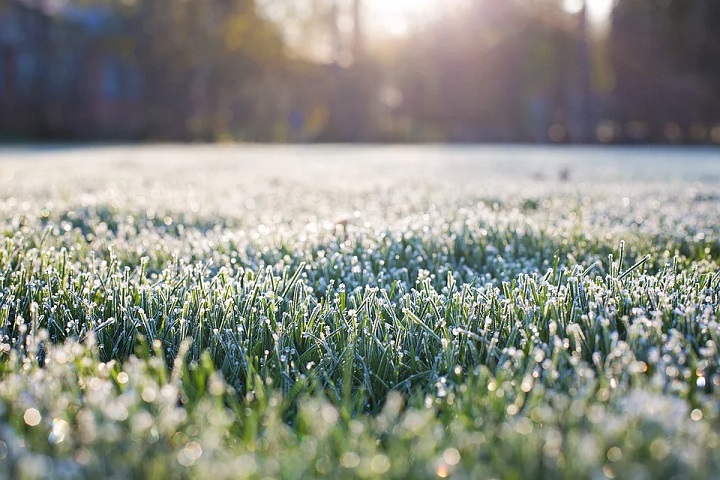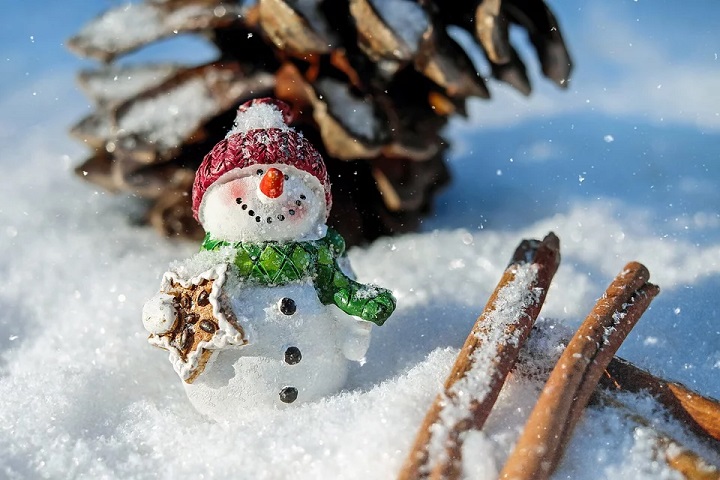Winter can be a harsh season for the great outdoors, taking its toll on everything from animals to flowers and all that lies in between.
Jack Frost doesn't make it easy - not for wildlife, and certainly not for plant life. The seasonal combination of cold weather and frosty conditions make for a formidable tag team.
Luckily, there are a few ways you can protect your garden from the detrimental effects of the winter cold.
This handy guide will help your garden lawn make it through the cold and come out the other side unscathed, fit and ready to spring into action and soak up the summer sun.

Will Frost Damage My Lawn?
In short, the answer to this is almost entirely dependent on how you treat your lawn during periods of cold weather and frosty conditions.
As a general rule, if you leave your lawn to it and let nature quite literally take its course, your lawn should be just fine.
Conversely, if you engage with your grass during its frozen state - be it mowing, fertilising on simply walking on it - your actions will likely do more harm than good.
Heave-Ho
A typical issue associated with lawn frost is heave - surface swelling caused by water expansion in the soil during freezing conditions.
While lawn heave will typically sort itself out once the weather returns to a more temperate climate, you may want to give your lawn a light roll in the spring to level the playing field.
Tips to Avoid Lawn Frost Damage
To help you maintain a healthy garden in the face of frosty conditions, here are a few top tips to avoid lawn frost damage and ensure your garden makes it through to springtime in one piece.
Step Off
While it may seem obvious to say, frost can quite literally freeze your lawn, making each blade of grass rigid yet brittle in the process (hence the crunch when you step on it).
Frozen grass is typically weak and highly susceptible to cell damage if walked on during its sub-zero state. As such, any footprints made during this period can quite literally leave a lasting impression.
To keep your lawn intact and in good health when the cold subsides and the warmth returns, keep off the grass and stick to the path during any spells of frost.
Mow No Mo'
Another obvious yet important point to keep in mind, never mow your lawn during frosty conditions.
As stated above, the cold temperatures can leave your lawn highly susceptible to damage and make it all too easy to cause long-term damage.
Think of it as your lawn having a weakened immune system. It won't take much to give it a secondary ailment so it's best to leave it be.
Similarly, you should also refrain from fertilising during this period too, as the excess nitrogen within typical fertilisers can actually have a detrimental impact on your grass.
Break Wind
Okay, to clarify that title, this is no time to let rip in your outside space - unless, of course, you want to distance yourself from the neighbours.
We are, however, referring to the act of protecting your garden grass by setting up windbreakers to reduce the impact of the seasonal breeze.
Strong, winter winds can do a lot of damage to a frozen lawn by stripping it of vital moisture and nutrients needed during the cold conditions.
In order to protect your lawn against the moisture-sucking capabilities of these dry winds, setting up windbreakers can help reduce the speed and impact of these harsh and frosty gales.
Whether you opt for the natural approach of creating hedges or the less natural approach of creating low-level walls, setting up protective barriers against the wind is a great way to protect your lawn in frosty conditions.

Do You (Really) Want to Build a Snowman?
When it comes to wintry conditions, snow is perhaps the highlight of the winter weather - especially if you have kids to share it with.
However, there is a notable side-effect of the snowy fun and that is the aptly-named nuisance that is snow mould.
A wintry variant of fusarium, snow mould occurs once the snow has thawed and typically effects fine or older turf, turning it yellow/brown and can effectively kill your grass.
Worse still, patches of snow mould can increase in size up to a foot or more in diameter and can commonly merge with other patches to form larger surface areas.
Snow mould typically occurs under areas of dense snow, e.g. beneath a snowman or mounds of shovelled snow.
The best way to control this naturally is to improve the airflow through efficient drainage, scarifying and aeration; however, for the best results, seek professional help.
For additional information on lawn frost damage or to find out more about our winter lawn care services, get in touch with the Lawn & Weed Expert team today!
Request a FREE Survey